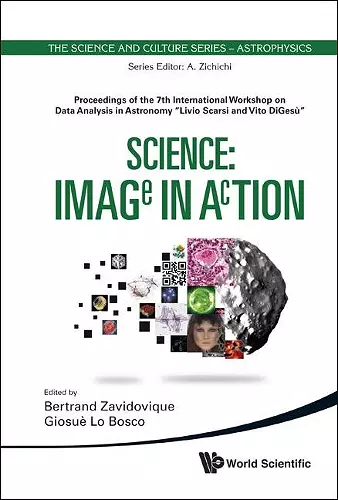Science: Image In Action - Proceedings Of The 7th International Workshop On Data Analysis In Astronomy "Livio Scarsi And Vito Digesu"
Bertrand Zavidovique editor Giosuè Lo Bosco editor
Format:Hardback
Publisher:World Scientific Publishing Co Pte Ltd
Published:9th Dec '11
Currently unavailable, and unfortunately no date known when it will be back

The book gathers articles that were exposed during the seventh edition of the Workshop “Data Analysis in Astronomy”. It illustrates a current trend to search for common expressions or models transcending usual disciplines, possibly associated with some lack in the Mathematics required to model complex systems. In that, data analysis would be at the epicentre and a key facilitator of some current integrative phase of Science.It is all devoted to the question of “representation in Science”, whence its name, IMAGe IN AcTION, and main thrustsSuch a classification makes concepts as “complexity” or “dynamics” appear like transverse notions: a measure among others or a dimensional feature among others.Part A broadly discusses a dialogue between experiments and information, be information extracted-from or brought-to experiments. The concept is fundamental in statistics and tailors to the emergence of collective behaviours. Communication then asks for uncertainty considerations — noise, indeterminacy or approximation — and its wider impact on the couple perception-action. Clustering being all about uncertainty handling, data set representation appears not to be the only solution: Introducing hierarchies with adapted metrics, a priori pre-improving the data resolution are other methods in need of evaluation. The technology together with increasing semantics enables to involve synthetic data as simulation results for the multiplication of sources.Part B plays with another couple important for complex systems: state vs. transition. State-first descriptions would characterize physics, while transition-first would fit biology. That could stem from life producing dynamical systems in essence. Uncertainty joining causality here, geometry can bring answers: stable patterns in the state space involve constraints from some dynamics consistency. Stable patterns of activity characterize biological systems too. In the living world, the complexity — i.e. a global measure on both states and transitions — increases with consciousness: this might be a principle of evolution. Beside geometry or measures, operators and topology have supporters for reporting on dynamical systems. Eventually targeting universality, the category theory of topological thermodynamics is proposed as a foundation of dynamical system understanding.Part C details examples of actual data-system relations in regards to explicit applications and experiments. It shows how pure computer display and animation techniques link models and representations to “reality” in some “concrete” virtual, manner. Such techniques are inspired from artificial life, with no connection to physical, biological...
ISBN: 9789814383288
Dimensions: unknown
Weight: unknown
328 pages